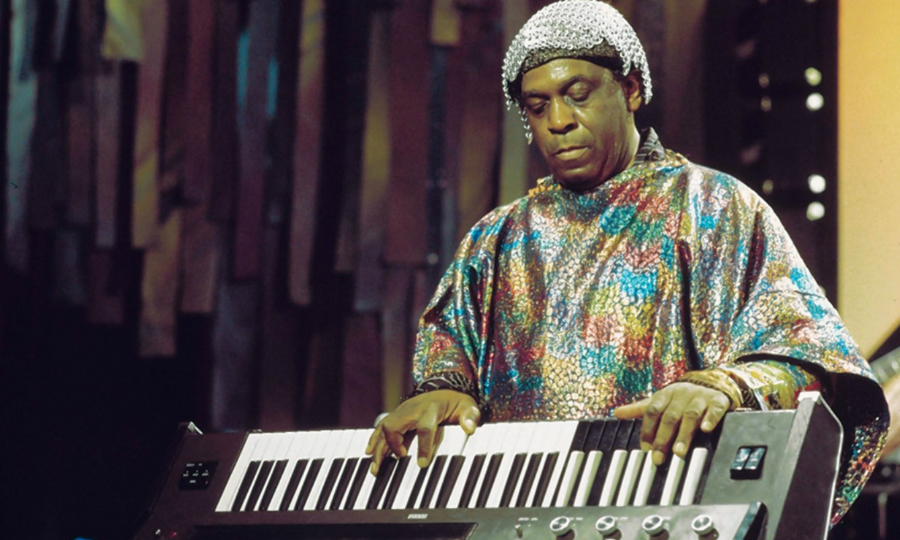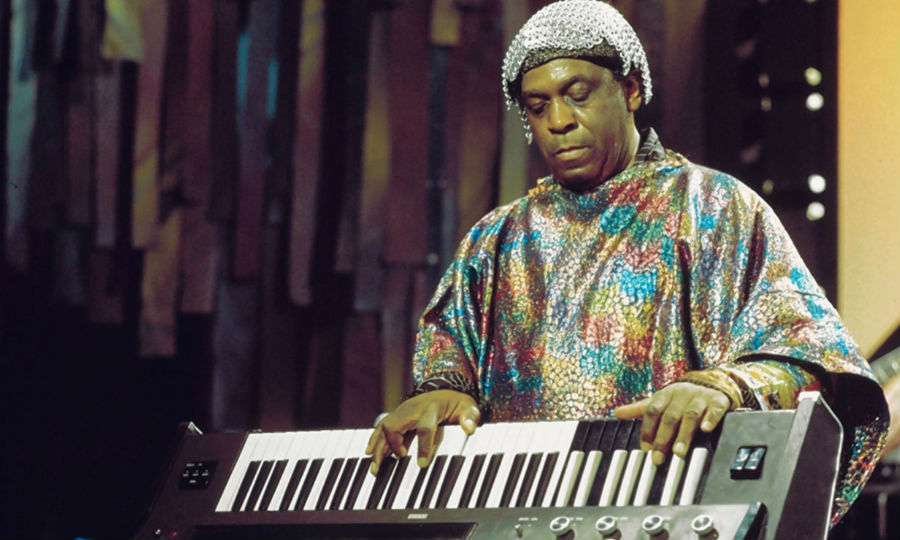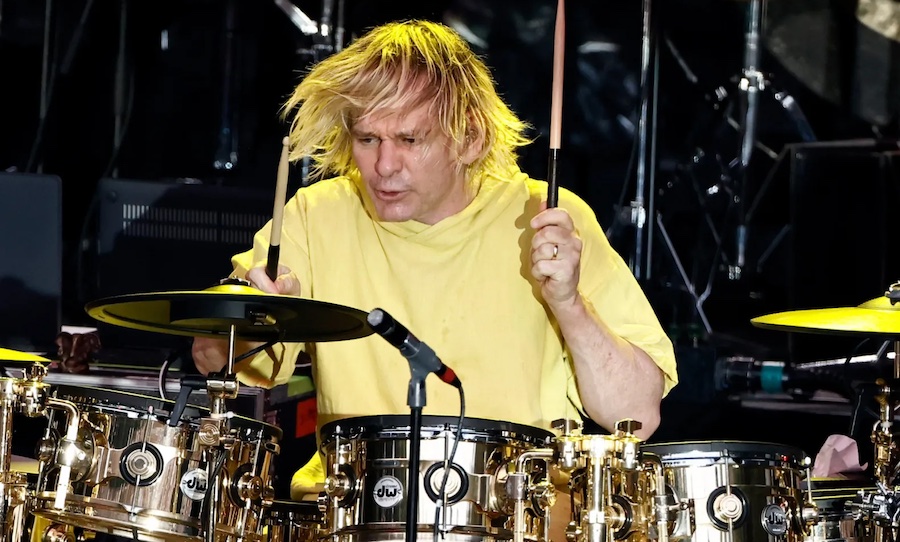Free jazz is challenging, ferocious, and often political. It can be earth-shattering and other times it can just be plain confusing. Nevertheless, it is a crucial and powerful step in pushing the foundations of Western music: melody, harmony, and structure.
In 1959, Ornette Coleman arrived at New York’s famous Five Spot armed with only a plastic saxophone and proceeded to wreak havoc on members of the audience with a radical new sound. Miles Davis was completely perturbed, writing later in his autobiography, “He just came and fucked up everybody.”
Classical composer Leonard Bernstein hailed him a genius, and despite its divisive nature, free jazz paved the way for the genre to explore the outermost reaches of musical complexity.

Here are the 1o most groundbreaking ventures in the genre. From the bowels of a plastic saxophone free jazz was born. Here are the most mindblowing, earth-shattering, and historically significant albums in the genre.
10. Sun Ra & His Arkestra – The Magic City (1966)
Recorded in typical Sun Ra fashion, the session was almost entirely improvised with Sun Ra co-ordinating solos with an outstretched arm. The 13-piece ensemble handles proceedings with surprising certainty in this Martian landscape, grappling with the architecture of Sun Ra’s mind and their fellow blowers.
Furthermore, the record is an ode to his hometown: Birmingham, Alabama. In a post Civil War decade the population of 100 exploded to a quarter-million, earning it the title of The Magic City. From otherworldly explorations to earthbound beats, this album has it all as it teeters on the tightrope between free jazz and avant-garde.
9. Alice Coltrane – Journey In Satchidananda (1971)
The legendary Alice Coltrane has produced some incredible work in her time, though none can top transcendent transportation of Journey In Satchidananda. Alice Coltrane’s daughter Sita Michelle one morning before school, awakening to the sound of harp and thought, “If heaven is like this, then I’ll be certainly ready to welcome it when I get my chance.”
The story goes that John Coltrane had ordered that harp, but died before it could arrive. The crystalline waves of harp that pulse throughout the album are a reverent reminder of the beauty of artistic expression. Plus the title track features an appearance from Pharoah Sanders. Confidently one of the more beautiful free jazz albums out there.
8. Pharoah Sanders – Karma (1969)
In 1969, a former sideman of John Coltrane, Pharoah Sanders stepped out from the shadows of his mentor’s demise and recorded Karma, carrying the torch for Coltrane musical and spiritual passion.
Tracks like Creator waste not a single note, opening with a wall of sound before dropping to a brief riff from A Love Supreme. Colors, on the other hand, is a shorter more structured piece featuring exquisite chops. When the final note fades you cannot deny the vision of Pharoah Sanders and his genius approach to arrangement.
7. Albert Ayler Trio – Spiritual Unity (1965)
Spiritual Unity was the record that pushed Albert Ayler to the forefront of jazz’s avant-garde, and the first-ever album released on Bernard Stollman’s seminal ESP label.
With catchy melodies, Ayler shook the foundations of traditional folk songs and standard scales with a shockingly visceral power. To paraphrase one of Ayler’s most famous quotes, the music is about feelings, not notes, and on Spiritual Unity that philosophy finds its most concise, concentrated expression.
6. Ornette Coleman – The Shape of Jazz To Come (1959)
Ornette Coleman is revered for pushing the bounds of jazz. This is where Coleman first scrambled the rules of jazz into his forward-thinking revolutionary doctrine. Driven by the idea that melodies don’t need to be attached to fixed chords, Coleman crafts beautifully dejected themes on Lonely Woman and Congeniality.
Even after all these years, Coleman has built a road map for the future of jazz that we are still struggling to unpack.
5. John Zorn – Naked City (1990)
The graphic cover photo which presents a man violently shot dead on a sidewalk closely mirrors the passion with which John Zorn approaches this set. With a group of top-shelf jazz cats in pursuit, altoist Zorn performs some incalculable and unpredictable free-jazz.
Abstract highlights come with re-imagined movie themes such as The James Bond Theme and Chinatown. This is a complex masterwork of free jazz that will reward the open-minded listener.
4. Matana Roberts – COIN COIN Chapter Four: Memphis (2019)
The fourth volume in a proposed 12-part suite exploring African-American history, the saxophonist fuses elements of free jazz and folk spiritual in an enlightening yet often dark excursion of passion and pain. Matana Roberts is as driven and inspired as they come.
While you may know her as the saxophonist on Godspeed You! Black Emperor’s Yanqui U.X.O, Roberts has is forging an incredible path of her own. Leading a 15 piece band in the first chapter, to a quintet in the second and a compelling solo venture on the third, Roberts is telling her history through the history of music to make music that is comfortably and confidently without equal.
3. Peter Brötzmann – Machine Gun (1968)
One of the most defining moments in free jazz history is Peter Brötzmann’s Machine Gun. The sonic assault brought a newly found, heavy impact to free jazz that still knocks listeners off their feet.
Brötzmann had an eye for talent and enlisted some top European improvisers at the beginning of their influential careers. Brötzmann leads his octet with a notorious ferocity and concentrated nucleus of power rarely matched on his later albums. It’s timid, immovable, and unrepentant in its madness and a shining beacon of someone pushing the limits of musical complexity.
2. John Coltrane – Ascension (1966)
Yet, there is a method to the madness. And even the freakout sections present a collected calculation submerged in the turbulence. Thus it is essential listening when trying to understand what Coltrane was doing with his career. Free jazz was a relatively niche genre before Ascension and it took someone like Coltrane to blow it up.
Here, you will find cats like Pharoah Sanders, Archie Shepp, and Freddie Hubbard busting their guts out through their brass across this nonstop musical trip. The key to enjoying free jazz is locating the form within the chaos. The moments where musicians link up. These sections became an anchor to latch onto before they spasm into another freakout phrase and can ultimately become an incredibly rewarding listening experience.
1. Eric Dolphy – Out To Lunch (1964)
Out To Lunch! sports one of the most iconic jazz album artworks ever. Designed by the iconic Reid Miles, it perfectly captures the exploratory nature of Eric Dolphy’s groundbreaking music.
The rising avant-garde star was fluent with flute, clarinet and alto sax. This is the only session Dolphy cut as a leader for Blue Note, however. Recorded in Feb 1964, Eric was dead before it was released. Opener Hat and Beard is a quirky tribute to Thelonious Monk and sets the tone for an album rooted in free-jazz while remaining tightly focused.



